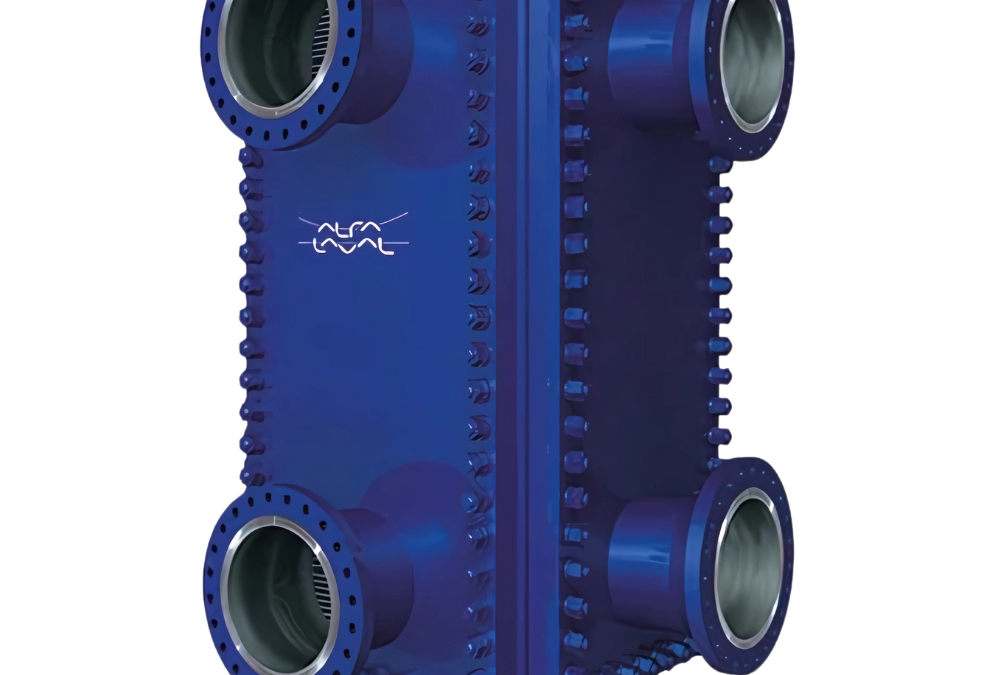Alfa Laval Compabloc

Alfa Laval Compabloc
Compabloc dominates the heat transfer business, with over 30,000 devices performing difficult duties worldwide. Because of its tiny size and good reliability and performance, it is simple to install and maintain. In addition to providing safe operation up to 60 pressure, our Compabloc line is three to five times more efficient than traditional shell-and-tube solutions. Read more about our range to learn how we improved the sustainability of our processes while keeping your demands in mind.
Compabloc Application
The Compabloc’s adaptability and process optimization potential is limitless due to its novel design idea. The Compabloc is adaptable enough to handle liquid-to-liquid or two-phase activities in a range of configurations, including single-pass or multi-pass, with either co-current or counter-current operation.
The high cross flow area and narrow flow channel allow for low-pressure responsibility and very minor pressure drops, making them excellent for reboiling and condensation circumstances. Heat recovery operations can be completed using a multi-pass system, which allows temperature crossover and close temperature approaches at temperatures as low as 3 °C (5.4 °F).
The design concept allows for a configurable number of passes on the two circuits, resulting in large changes in the flow rates on the hot and cold sides. If temperatures or flow rates change, the baffling can be quickly changed to accommodate the changing duty.
If you don’t have enough space for a vertical mount, the Compabloc can be used for traditional liquid-to-liquid, condensation with sub-cooling, or gas-cooling applications. If you have enough space for a horizontal installation, it can be used for most condensation, reboiling, and liquid-to-liquid applications.
Compabloc Benefit
- Improved thermal performance and a more compact design reduce the size, weight, and number of heat exchangers.
- More efficient energy utilization due to a combination of close temperature approach and crossing temperatures.
- Activities that require the safe handling of hostile media and settings with high pressures and temperatures
- Reduced fouling due to increased shear stress on the wall.
- The unit’s ability to open and access the heat transfer area is critical for inspection, mechanical cleaning, maintenance, and repair.
- Extremely economical design that uses high alloy material.
- The specific plate-to-plate connections reduce the possibility of crevice corrosion.
The two media circulate between the Compabloc heat exchanger’s corrugated plates via alternating welded channels. These corrugated plates promote turbulence, which reduces fouling and increases heat transfer efficiency. In a multi-pass unit, the overall flow arrangement is countercurrent, while the media flows in a cross-flow arrangement within each pass. A pushed baffle divides each pass from the subsequent passes, forcing the fluid to rotate between the panel and the plate pack.
Specific information
The standard materials for heat transfer plates are 316L, 254SMO, Titanium grade 1, 904L, Alloy C276, and Alloy C22. On request, additional documents may be made available. Panels, like plates, are often made of carbon steel and lined with the same material. On request, we may provide alternative materials, such as big stainless steel.

